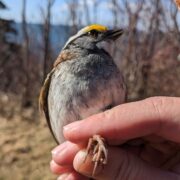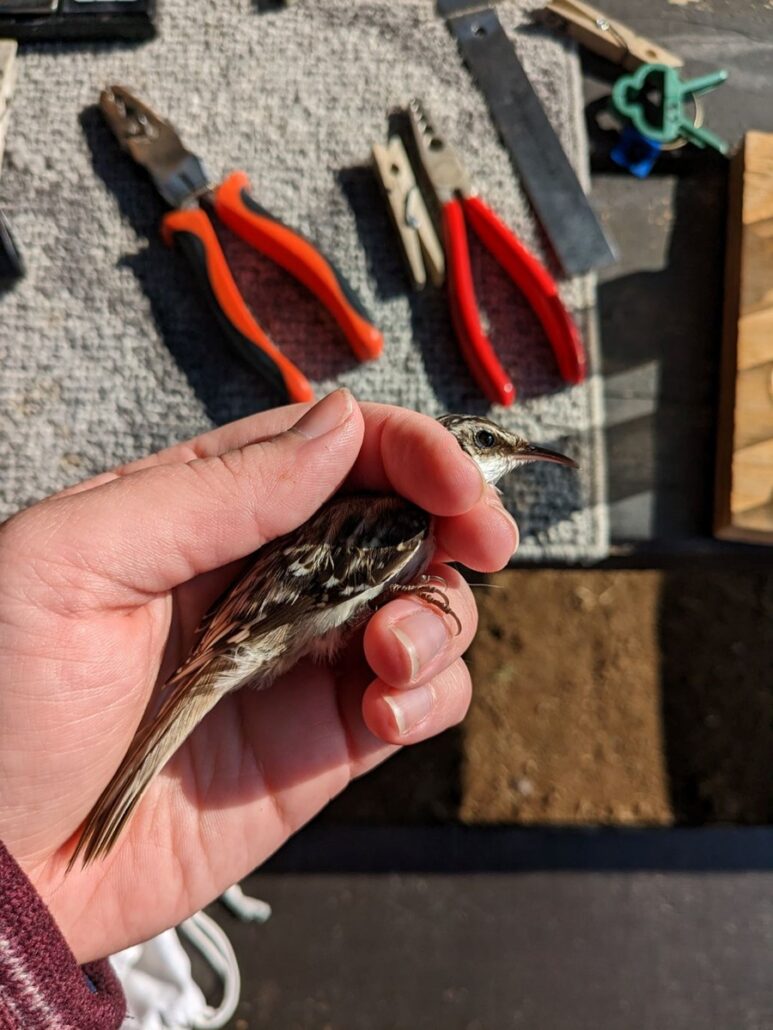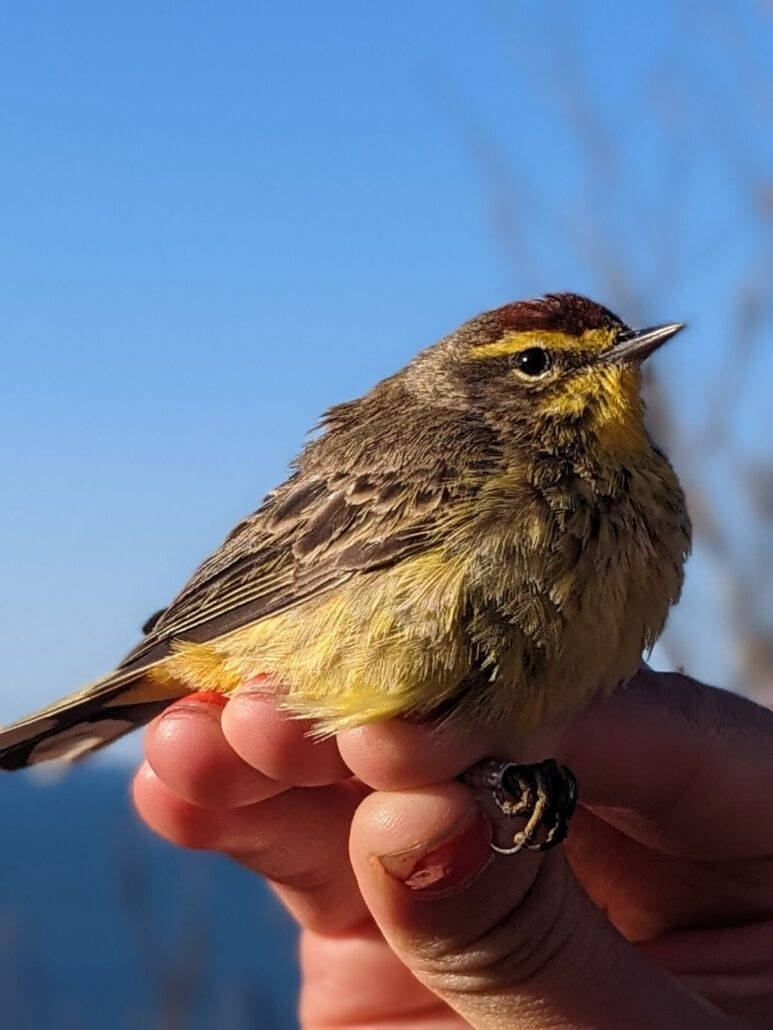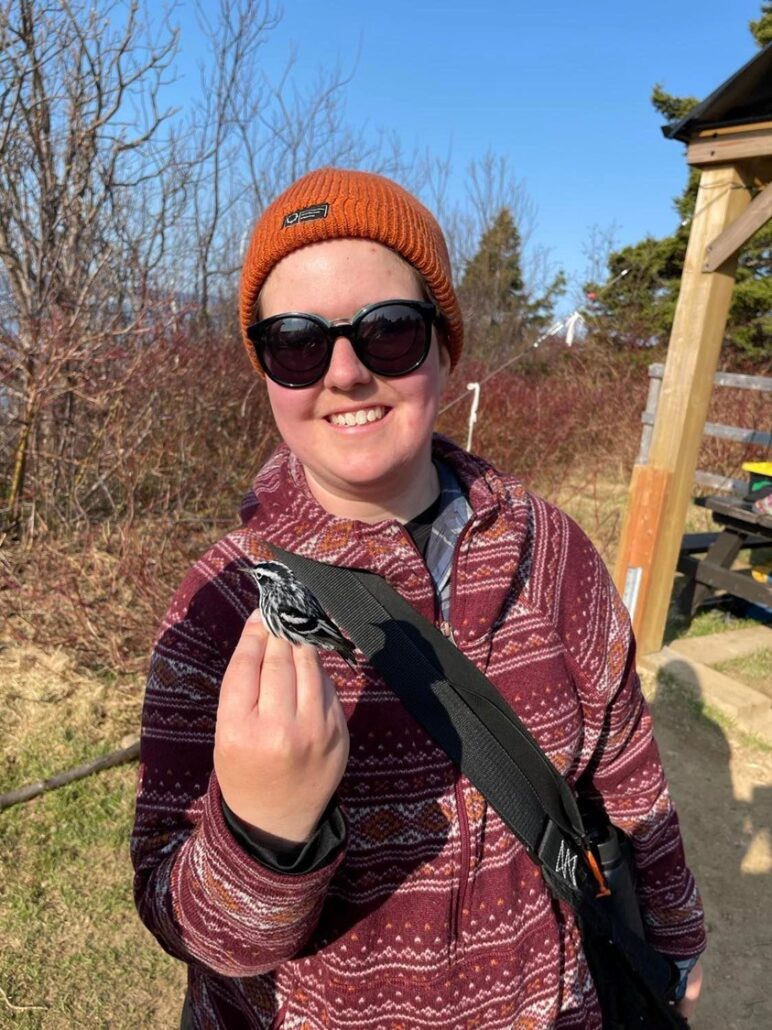A FLY IN FORILLON
Our colleague Audrey Foisy-Morissette decided to take a week of vacation this spring. Some would say that a vacation is meant to relax, but for Audrey a vacation in May is only the best opportunity to go birding! Since 2018, Audrey is involved with the Observatoire d’Oiseaux de Rimouski which conducts several types of bird inventories on different sites in the Lower St. Lawrence and Gaspé Peninsula. Audrey took advantage of her week to give her time to the bird banding station in Forillon.
What is bird banding?
It is not a suitcase in the shape of a bird, but rather the collection of scientific data on them. Banding is one of the techniques used to follow up on marked individuals and therefore to collect data over time.
First, this type of research requires the installation of mist nets 30 minutes before sunrise. This activity is not very suitable for late risers! The nets are rotated on a regular basis and the experienced volunteers proceed with the removal of the birds. They are then taken to the banding table where a band is placed on one of their legs. The band has a unique nine-digit identification code to identify the animal in the next capture. In addition the specie, age, sex, wing length, mass, fat and muscle levels are recorded for each bird. The procedure is designed to always prioritize the wellbeing of the bird. In fact, a series of permits from the competent authorities is required to carry out this type of activity.
The banding station is staffed by 10 people every day. Of this number, the majority is volunteering! Working at a banding station allows young biologists and technicians to develop their skills and knowledge of the bird world in a unique way.
In short, bird banding provides a valuable tool for the study, conservation and understanding of bird populations. Through banding, ornithologists can gather essential data on birds, their behaviors, and their movements, allowing for better protection of these magnificent winged creatures and their environment. It is also important to realize that protecting bird habitat will have major impacts on the conservation of other species that occupy the same type of habitat.
The bird banding station of Forillon Park is associated with the Bird Observatory of Rimouski. The non-profit organization organizes the Rimouski Bird Festival which is an event awaited by different types of ornithologists. The third edition of the festival will take place from May 24 to 29. For those who are interested, the festival is still in registration period. You could participate in one of the guided tours or observe different specialists and volunteers carrying out the multiple inventories in places very suitable to bird migration in the Lower St. Lawrence.






